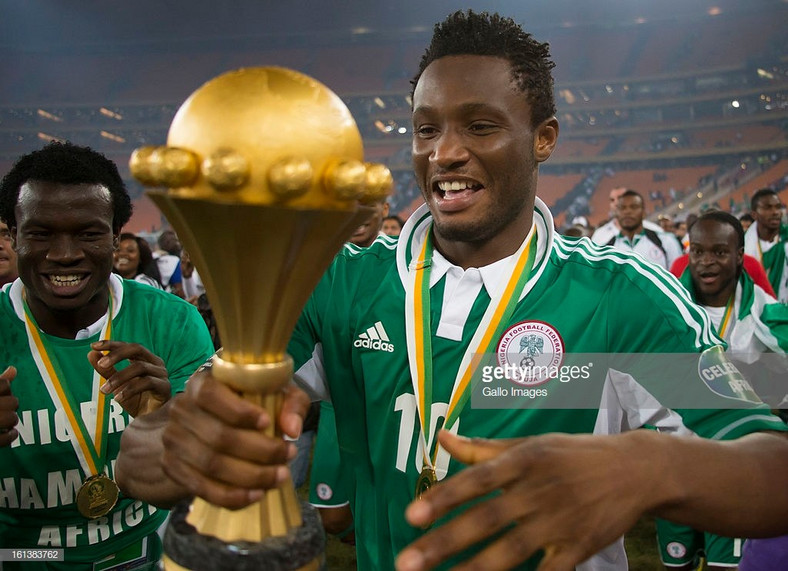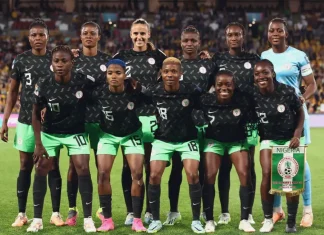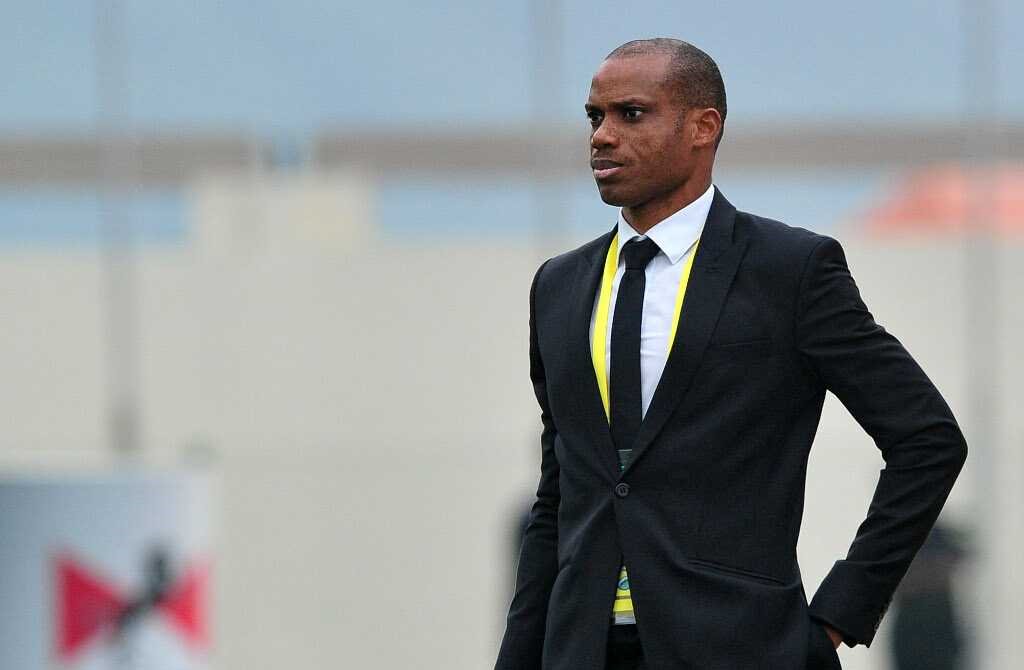
In Chemistry, there is often something referred to as the control variable. Essentially, a control variable is what is kept the same throughout the experiment. It is not the primary concern in the experimental outcome and it is said that any change in a control variable in an experiment would invalidate the balance of dependent variables, thus skewing the results. This variable is also known as the constant variable or simply as “control”.
In essential existence (basic living) which primarily involves sleeping and waking up, it is safe to say there are two control elements, the Sun and the Moon and these regulate essential existence. Dictate for the most part what we do away from existential living, when we work, eat, sleep, and most times even when we party (we all prefer to party at night).
Likewise in football, especially modern football, the element of control is becoming increasingly more important as we have seen managers in more recent time not want to give up nothing but small percentages in games either with a controlled attacking approach, or a controlled defensive approach.
With teams like Barcelona, Bayern Munich, Ajax Amsterdam, Man City under Guardiola and Arsenal in the first decade under Arsene Wenger, to mention a few teams, being synonymous with the controlled attacking style of play. Chelsea and Jose Mourinho, Atletico Madrid under Diego Simeone are prime examples of Controlled defensive sides. Juventus have always oscillated and been a hybrid of both styles.
These managers and these teams most of the time, need a player in the side that is an epitome of control, comfortable in possession, assured without it and these players usually play in the center of the pitch. These players let the game revolve around them and can almost be said to have a birds-eye view of the pitch. The most popular of these types of players are Busquets, Alonso, Jorginho, Pirlo in his later years, Fernandinho in Guardiola’s city side and new kid on the block Frenkie De Jong.
Less popular are the likes of William Carvalho, Jordan Veretout, Albin Ekdal etcetera. It is therefore to his credit that John Obi Mikel sits pretty in this A-list setup and is regarded as the greatest non-hero of Chelsea’s most successful period, the control variable that let the other players in his decade and one year at Chelsea, make names for themselves.
John Michael Nchekwube Obinna, popularly known as John Obi Mikel during his childhood days was always known as a kid destined for greatness long before he even tasted stardom. Born to a civil servant and a trader, it would have been easy to down tools and become the average talented football kid or adolescent in Nigeria. Most of his youth, he settled for the small life but he had the talent, the attitude, and endurance and with this, the big moves were by the door. It all started on the dusty football pitch in the Jos Metropolis Township Primary school where he was first sighted by a rich football agent who stayed around, Alhaji Babawo Mohammed Adamu.

“I can say without any contradiction that I was the person that discovered him when he was just a kid. He was playing in the street close to my area. I called him and told him what I’ve seen in him”
Although Alhaji Babawo was never given enough recognition for the role he played in Mikel’s career, from here, Mikel was picked as a young talent from a pool of over 3000 young boys to play for the then prestigious Pepsi football academy. He stood out to scouts and was later picked to play for top-flight for Plateau United, a side known for developing former National team stars.
However, even though he represented the country in the U-17 World Cup in 2003 and made headlines in Finland, his rise up the ladder wouldn’t gain any traction until the U-20 World cup Holland in the summer of 2005. He had an excellent competition along with now 5-time Ballon d’Or winner Lionel Messi.
The Nigerian team was so good the Argentines needed two penalties from La Pulga Atomica to win the game 2-1 with Messi winning the Golden ball, Mikel the Silver ball and Taiye Taiwo the Bronze ball on a rather disappointing night at the Galgenwaard Stadium for the Flying Eagles of Nigeria. Mikel was instrumental to Nigeria’s run to the final with all-encompassing displays in midfield against the likes of Holland, Morocco, and Brazil.
Donning the number 9 jersey, Mikel was a much-attacking midfielder in this stage of his career and while Messi was the undisputed star of the tournament, Mikel did eclipse players like Fabregas and Aguero who played in similar roles in the tournament.
One could have been forgiven for thinking the two standout players of the tourney would go on to have similar careers, however, although Mikel hasn’t gone on to dominate world football, his career hasn’t been anywhere near inferior to that of Messi and it is indeed testament to Mikel that most of his teammates never even went on to play top level football and even the few that did, did so for only a very fleeting period.
Mikel spent one more year with his current employers Lyn Oslo amid transfer controversies between Mikel’s representatives, Manchester United, and Chelsea which would eventually be resolved in a transfer which saw Mikel move to Premier League title winners Chelsea managed by Jose Mourinho.
Mikel, the scruffy Naija boy, was about to ply his trade alongside the Greats of the game under the tutelage of “The Special One”. Mikel had impressed Jose in a training session earlier in 2004 and now he had finally gotten his man. Mikel’s newly evolved style of play would go on to feel like a match made in heaven for Chelsea and would almost be synonymous with Jose Mourinho. Jose was the master at Control defending and he would later realize that Mikel was his able lieutenant in the centre of the park.
Mikel didn’t immediately play as a defensive midfielder for Chelsea but due to certain absences in the team, Jose went on to try him in the position against Spurs in a FA Cup replay. In that game, Mikel, albeit in a very raw manner, displayed competence in his defensive positioning, an intimidating ability to pseudo-mark both man and space and an above average strength.
His long and short range passing also proved very useful as he recycled possession to his more attack-minded teammates likewise his ability to slow down the tempo of a game to his team’s pace all the while exuding great calmness in an area of the pitch clogged with traffic. Mourinho’s control experiment worked, yet another masterstroke. Mikel would go on to almost seamlessly fill Claude Makelele’s boots when he left for Paris.
As a control variable in football, you don’t have so many eye-catching performances which can lead to many underestimating the importance to a team. Most of the time, because of the consistent 7/10 performances, the player becomes a victim of his own success and after a while, the fans get bored of the consistency and almost demand such player to have a bad game so they can appreciate him again.
This was the lot of Mikel Obi in Chelsea time and time again even though he was pivotal in Chelsea’s most successful decade in her history with notable Silverware being two Premier League titles, 4 FA Cups, The UEFA Champions League in 2012, The UEFA Europa League in 2013, The League Cup in 2007 and one community shield.
As much as Mikel did the dirty job for Chelsea so the likes of Lampard, Deco, Malouda, Drogba etc could flourish, his essence to the Chelsea squad in terms of leadership couldn’t also be overlooked as he was often see barking instructions to most of the team’s senior players and he was always regarded with an elder statesman-like respect in the dressing room.
“I could scream at Didier and Lamps. I was only 25 but they would respect and listen to me.”
Mikel was in control of the team affairs both on and off the pitch and if players like Carrick are being lauded for being continuity midfielders and a half, the stability in midfield, the brains behind the control, then maybe Mikel doesn’t really get the respect he deserves.
Season after season, manager after manager (and Chelsea had a knack of having many of these), Mikel performed admirably and gained more playing time partly due to Michael Essien being unfit most of the time, earning plaudits from the likes of Guus Hiddink, Luiz Felipe Scolari, Carlo Ancelotti, and Roberto Di Matteo. Mikel was never a player with blips in form. The consistency was usually maintained from the start of a season to the end. Rarely being caught out of position and with a passing accuracy average percentage of 89.93% in his time at Chelsea, it would be easy to be simplistic to say he hardly ever played a forward pass.

Let’s not feed any narratives here, Mikel did way more than play 5 yard passes to Frank Lampard. He played Cross-field passes effortlessly, switching the direction of Chelsea’s play at key periods during games. He was always in Xavi-esq space just before the center circle and was almost always played the right pass to a teammate in space. Mikel’s rule in his words was
“Where I am not 100% sure that a pass I am about to play will get to its destination, I won’t play it.”
With the veracity of youth, winning 78% of his total tackles in Chelsea, came the calm head of veteran in the position with 38 yellow cards and only 2 red cards in his 11 years at Chelsea. Before the start of the 2011/12 season, Mikel again displayed incredible mental strength as his Father was abducted on the 10th of August. While negotiations about his Father’s release were ongoing in his home country, Mikel appeared for Chelsea in the debut game of the season against Stoke at the Britannia Stadium and almost claimed his first Chelsea goal. What a moment that would have been. Manager Andre Villas-Boas, hailing Mikel’s mental toughness, said:
“Mikel has shown outstanding commitment and professionalism during this most difficult of times and the club will continue to offer it’s full support to him and his family.”
Mikel’s best characteristics were the limelight of some of Chelsea’s best games which consequently are regarded as some of Mikel’s best games as a control defensive midfielder. His first game in the position under Jose Mourinho comes to mind as a good highlight but it was in the Champions League final as a single pivot against the trio of Toni Kroos, Bastian Schweinsteiger and Thomas Muller that Mikel’s worth to Chelsea was undeniably stated.
This was a game where, at The Allianz Arena, the home of the Bavarians and Chelsea struggled to get a hold of the ball to create many chances. Mikel had the unenviable task of shadowing two of the best midfielders in Europe as well as shadowing the runs of one of the best Raumdeuters in World football. In a game where many believed him to be their Man of the Match, Sky Sports pundit, Jamie Redknapp said he played an excellent game…
“…putting in a performance that I didn’t think he had in him. He was putting fires out everywhere”
It is easy to overlook Mikel’s outstanding performances in the Premier League because it had almost become expected of him but he had consistently fantastic games against Liverpool, Manchester United, Arsenal, Spurs and his levels never dropped even against lower opposition.
Mikel left Chelsea without much of the acrimony he deserved and his departure was almost anti-climactic. Antonio Conte’s appointment brought about some strange personnel and tactical decisions with the likes of Victor Moses becoming integral to the Italian’s plans. The arrival and form of Ngolo Kante from Leicester meant Mikel was a casualty of the new regime. His slow, control build-up style of play was frozen out of the Chelsea DNA as Antonio Conte opted to play on the fast break with his tried and trusted 3-4-3. Mikel left Chelsea for the Chinese Super League, perhaps or not swayed by the monetary complements of China.
Also an ever-present for the Nigerian National team, and since his debut in 2005, Mikel has hardly ever shacked the National responsibilities which is in line with the Nigerian National anthem, ‘Arise o compatriots, Nigeria’s call, obey’.
Mikel was then part of the squad that played the African Cup of Nations (AFCON) in 2006 and 2008. However, he wasn’t in the Nigerian squad for the 2010 World cup due to injury but would go on to be integral in the midfield as Nigeria won the 2013 AFCON.
His World cup debut came in 2014 in an enviable midfield engine room of Ogenyi Onazi and John Obi Mikel. Mikel was Man of the Match in the first game against Iran but Nigeria eventually crashed out controversially to France in the R16. It was reported that the Nigerian midfield had been a target of bad tackles from the French Midfielders.

Mikel was then at the 2016 Summer Olympics in Brazil as captain and one of the three over-aged players winning the bronze medal. He would go on to appear in his second World Cup in 2018 but he had a dour time in attacking midfield and could not captain the Super Eagles into the knockout rounds.
Mikel has played with several generations of Nigerian players in the National team and has never really looked out of place during any period. With 85 caps and counting for the Super Eagles, his presence, essence, and importance to the team and ultimately to the Nation cannot be overemphasized. Just behind Nwankwo Kanu, Mikel is the second most decorated Nigerian player.
At some point, Mikel was almost synonymous with the National team and unlike most African players in African competitions who are usually described with ‘pace and power’, Mikel was elegant on the ball for a living. Although he played mostly in attacking midfield for Nigeria, it was clear to see where his strengths lay and until he took it upon himself to come to demand the ball from the center backs, the Nigerian midfield always looked imbalanced with Mourinho speaking about this during the 2018 FIFA World Cup…
“He’s a bad number 10 and a good number 6. Nigeria lost a good number 6 to get a bad number 10.”
Thus, his ability to control games and have a calming influence in the center midfield was limited for the National team and his strengths may not have been fully understood and utilized back home in Naija.
In 2013, Mikel had an unbelievable year for both club and country with ridiculously good performance after incredible performance. Being super solid in holding midfield for Chelsea while almost simultaneously being an indelible all-round midfielder for the National team where he destroyed Yaya Toure and the Ivorians on the road to AFCON glory.
In the Confederations cup, particularly against Spain, where although Nigeria was beaten 3-0, the general consensus was that Mikel was the best midfielder on the pitch ahead of Xavi and Iniesta. So good was his year that when Yaya Toure was awarded African Player of the Year, and rightly so as he was incredible for City, it was like a gut punch to all Nigerians who were fully expecting their man to edge the race.

With a career renaissance brewing at the Riverside Stadium in Middlesbrough, his stock may not be rising with English football fans but it’s certainly being remembered and Middlesbrough supporters after a few games, cannot believe what player they’ve got in their team.
At 31 now, he has definitely honed his craft over the years and is now being described as too good for the EFL Championship (I mean, obviously). His formerly languid style has now metamorphosed into a majestic, controlled movement. His economy of movement and finding the right pass at the right time, excelling, even more, this period.
“To the untrained eye, Mikel looks like a lazy bastard who doesn’t break a sweat but after a while, you realize he doesn’t need to and he’s just a million miles better than everyone else.”
Mikel is of different gravy, a kind of assurance on the ball that you don’t see in the Championship and with performances like this, another stint in the Premier League either with ’Boro or another team is certainly on the cards. So Hey, Naija boy, you dey alright, you make sense!! And we are proud of you.
Olumuyiwa Adagunodo.









